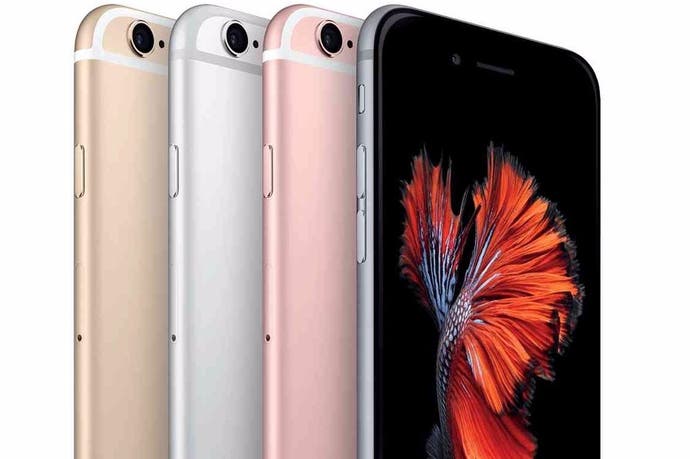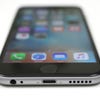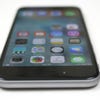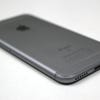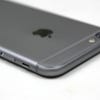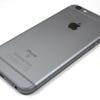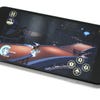Apple iPhone 6S review
You've got the 3D touch.
Apple followers have had over 12 months to become accustomed to the larger 4.7-inch screen of the iPhone 6, but there are still some who have fought the desire to upgrade because they genuinely prefer the smaller 4-inch screen of the 5S. Those same people will no doubt be anxiously gazing at the freshly-released 6S and feeling their resolve slowly weakening - and with good reason. Apple's latest handset might be larger than some long-time customers are used to (best not to mention the iPhone 6S Plus), but - as Android followers have known for quite some time - it proves that bigger is indeed better. Not only that, but the traditional bi-yearly 'S' enhancement supplies some notable improvements over 2014's iPhone 6, making the upgrade process even easier to stomach.
As we've learned to expect, the iPhone 6S is - in purely cosmetic terms - a dead-ringer for the previous model. Apple is firmly committed to retaining designs for two-year cycles, and with HTC and now Samsung following suit, it would appear that the approach has some merit. Aside from the S on the back of the device, you'd be hard-pressed to tell it apart from its forerunner, which is no bad thing. True, there are those who prefer the sharp, straight lines of the iPhone 4 and iPhone 5 models, but the rounded curves of the iPhone 6 series feel much more agreeable in the hand. There's not a sharp edge on the entire device; even the screen has a gently rounded perimeter, and the overall effect is one of comfort. It might not have that eye-catching quality that the classic iPhone 4 had and the all-metal design is slightly less unique in an age when some of the cheapest Chinese Android phones are constructed from brushed metal, but the iPhone 6S is still a beautiful phone to behold.
From the front, the 6S looks reassuringly familiar, retaining the general layout which we've seen in previous models. The home button sits below the 4.7-inch, 1334x750 LCD display, recessed slightly so that your thumb can easily locate the Touch ID fingerprint scanner residing within. On the right-hand edge of the phone you'll find the power button and nano SIM tray, while on the opposite edge there are the volume buttons and the mute switch - a useful feature that surprisingly few other hardware manufacturers have chosen to imitate. The top edge is featureless, while on the bottom we have the mono speaker, lightning port and 3.5mm headphone socket.
The back of the phone is all-metal, aside from some thin strips of plastic that allow the internal antenna to function properly. The 12-megapixel camera juts out slightly from the back of the device, meaning it won't rest totally flat when placed on a table - a minor issue, but one that is keenly felt with the phone wobbling slightly as you tap when it is placed on a flat surface. The screen is identical to the one that shipped with the iPhone 6; there's no resolution bump or panel improvements, so don't expect the punchiness seen on Samsung's latest AMOLED displays.
As is tradition, the big changes in the S range devices occur inside the phone, and that's certainly the case here. Apple has given the iPhone 6S a big shot in the arm with a new A9 SoC, which has two cores clocked at 1.8Ghz - the iPhone 6's A8 had cores locked at 1.4Ghz. Furthermore, there's a new PowerVR GPU, offering a substantial 2x boost over the iPhone 6's performance - it even outperforms the A8X in the iPad Air 2. All of this is possible owing to the use of 14nm and 16nm fabrication technology dual-sourced from chip manufacturers Samsung and TMSC (it's a lottery as to which chip you'll get, though Apple is claiming equivalent performance and battery life from both).
On top of that - for the first time in iPhone history - the flagship handset features 2GB of RAM. Given that some Android phones come with 4GB of RAM these days, it's almost unbelievable that Apple has managed with just 1GB in its previous iPhone models - a testament to the efficiency of iOS and the talent of the development team behind it. The additional memory makes the world of difference, and you'll find that apps don't have to constantly reload when you're moving between them in the app selector.
The benefits of the more powerful chipset and extra RAM can be felt practically everywhere, from the faster unlock when using the Touch ID fingerprint scanner to general smoothness of navigation around the phone's UI. However, such improvements are expected in yearly upgrades, and it's big ideas that tend to capture the hearts and minds of consumers. With the iPhone 5S, it was the ability to use your finger to unlock your phone, while the iPhone 6 offered contactless payments thanks to Apple Pay.
This year, it's all about 3D Touch, and while it might seem like the kind of gimmick a company would dream up when dangerously close to scraping the bottom of the barrel, it will almost certainly be incorporated into almost every smartphone on the market in the next few years - Huawei has already launched a phone including the technology, the Mate S, and it is rumoured that Chinese mobile giant Xiaomi is going to include the feature in its forthcoming Mi5 handset.
| iPhone 6S | iPhone 6 | iPhone 5S | Galaxy S6 | Galaxy S5 | Google Nexus 5X | Google Nexus 6 | |
|---|---|---|---|---|---|---|---|
| Geekbench Single-Core | 2552 | 1605 | 1294 | 1233 | 972 | 1263 | 1053 |
| Geekbench Multi-Core | 4464 | 2901 | 2463 | 3964 | 2949 | 3436 | 3081 |
| 3DMark Graphics | 41968 | 22824 | 19488 | 22954 | 17464 | 22074 | 24668 |
| 3DMark Physics | 12998 | 9385 | 8042 | 17795 | 15541 | 12641 | 17259 |
| 3DMark IceStorm Unlimited | 28067 | 17304 | 14797 | 21565 | 18524 | 18934 | 23205 |
| GFXBench T-Rex | 79.7 | 42.8 | 28.9 | 58.0 | 27.4 | 38.0 | 37.0 |
| GFXBench Manhattan | 40.3 | 18.1 | 13.5 | 25.9 | 11.4 | 16.2 | 18.0 |
The concept is simple - the phone's screen now detects the pressure of your finger, allowing you to perform "peek" and "pop" commands - that's Apple's parlance, not ours. Holding your finger down on an app icon brings up a menu of quick commands - for example, a hard press on the camera app brings up a pop-up menu where you can take a selfie, snap a photo, record a video or take a slow-motion clip. Elsewhere, you can "peek" at the contents of messages without actually opening them, or cause "live" photos to spring to life with a firm press. It all sounds a little superficial on paper, but in practice it's actually quite useful - when it works, of course.
The big complaint about 3D Touch at the moment is that not all apps support it, and there's no way of knowing which ones do until you give the icon a hard press. However, over time we imagine that this gesture will become universal and second nature to the user, just like the now ubiquitous "pinch-zoom" command has done. It's another layer of interaction app designers can leverage and harness to improve the functionality of their programs.
3D Touch is going to change the way we play smartphone games as well. Just as the pinch-zoom gesture became an essential tool during games of Angry Birds, allowing you to zoom out and gain a better view of the level, 3D Touch has applications which will enrich and improve gaming. The most notable example of this is Warhammer 40,000: Freeblade, an on-rails action title which places you in command of a massive hulking mech known as an Imperial Knight. Using 3D Touch, you can apply pressure to zoom in and target enemies more accurately, while a firm press will temporarily switch to a more powerful weapon. While Freeblade is a linear and ultimately shallow experience, it's a tantalising glimpse of the kind of gains 3D Touch can bring to the table.
Outside of this capability, the iPhone 6S is an impressive gaming system. The bolstered processor - combined with the fact that the screen resolution has remained static - means that 3D games run smoothly and free of the performance issues which seem to plague rival Android handsets. Titles like Geometry Wars 3 and Skylanders Superchargers are delivering visual experiences close to console quality; indeed, the latter blurs the line between mobile and console by offering the same amount of content as the Sony, Microsoft and Nintendo editions - Superchargers is free to play, but buying a starter pack unlocks the full game and even supplies an NFC portal, toys and wireless gamepad for the authentic experience. iOS may still be frowned up by hardcore players, but few would be churlish enough to deny that it is maturing as a gaming platform as each year rolls by.
For all of its refinements and improvements, there are things that the iPhone 6S lacks which are commonplace in many of its rivals. Wireless charging is possibly the most notable; we've seen it in several Android and Windows Phone devices over the past few years, and it's a genuinely useful feature that Apple really should have adopted already. Another is fast charging, the value of which was proven by the excellent Samsung Galaxy S6, which can go from empty to 100 percent battery after about an hour on the mains.
Another area where Apple has allowed its challengers to catch up is the camera. While the snapper in the 6S gets a megapixel bump from last year's model - 12 up from 8 - it still has a f/2.2 aperture, which means it's not great at low-light shooting. On the upside, it's capable of capturing 4K video at 30fps and 1080p at 60fps, and the new 'live' photo mode records a short video which can be shared with other iPhone users. These enhancements can't hide the fact that the 6S is no longer the best shooter in the business; the Galaxy S6 is faster to focus and takes more vibrant images - it's also better in darkened environments thanks to its f/1.9 aperture.
The final disappointment is the battery life, which is on par or even slightly worse than the iPhone 6. The reason for this is that Apple has had to use a smaller battery in order to fit more components inside while maintaining the same dimensions as the previous model - and the drop to a smaller processor doesn't quite provide enough power savings to off-set the difference. That means dropping from a 1810mAh power cell to a 1715mAh variant - a small change you might assume, but the 6S is a hungrier beast compared to its forerunner, thanks to a more powerful chipset and additional tech, such as the 3D Touch screen and the "Taptic Engine" which provides haptic feedback to accompany your firm presses. The end result is a phone which, even with a moderate usage pattern, will struggle to last until the close of the average day unless you're especially careful. This is where fast charging capability would have come in very handy.
Apple's alternative solution is the new $99/£79 smart battery case - bringing iPhone 6S Plus levels of stamina to the smaller handset, albeit in a visually grotesque design. Over-priced and underperforming (the battery case tops up your iPhone's internal battery from zero per cent to around 80 per cent ), there are more effective third party solutions on the market.

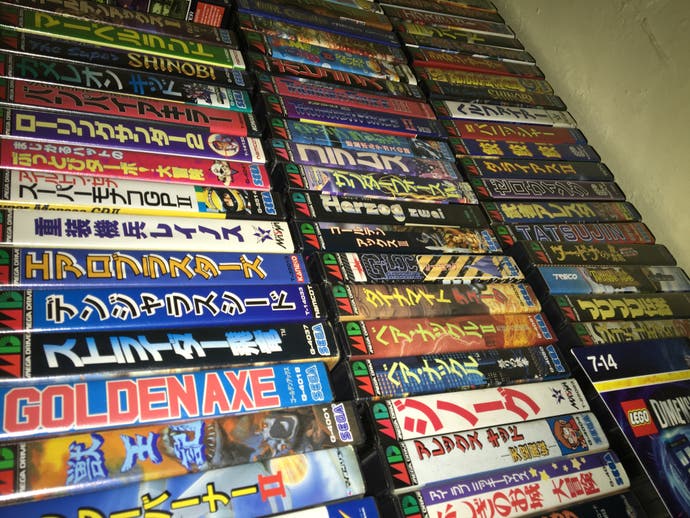


Apple iPhone 6S: the Digital Foundry verdict
The S range of iPhones have always been about applying subtle improvements to an existing template, and while that is still true here, the 6S offers some significant gains over its predecessor - the most obvious of which is the introduction of 3D Touch, which could prove to be a game-changing feature not only to the iPhone range, but to the smartphone and tablet sector in general. It has many interesting applications when it comes to interacting with a touchscreen, and the potential for enhancing the way in which we play games on such devices is striking - even if there's only a handful of titles which support it at the present moment in time.
The fact that Apple has stuck with the same resolution display for the 6S might disappoint those who were hoping for a 1080p HD display, but unless you're planning on playing with the handset mere inches from your face, you won't spot any pixels - and the benefits in terms of performance are worth the sacrifice. The same amount of pixels to push but a drastically better A9 processor - not to mention 2GB of RAM - means blistering performance, not only in everyday use but also with intense 3D games. Check out the GPU benchmarks above to get some idea of the technological leap Apple has achieved here with the leap to a smaller fabrication process.
As ever, the iPhone 6S comes with a premium price tag, but if you're already a card-carrying Apple devotee, that won't present much of a stumbling block. On top of the excellent OS and super ergonomics, this is quite simply the most powerful smartphone money can buy. That said, it's a little disappointing that the camera doesn't improve in line with the mammoth increase in processing power, while display pixel-count may not impress those who expect the absolute state of the art, but the fact remains that the iPhone 6S is one of the best smartphones on the market right now.
